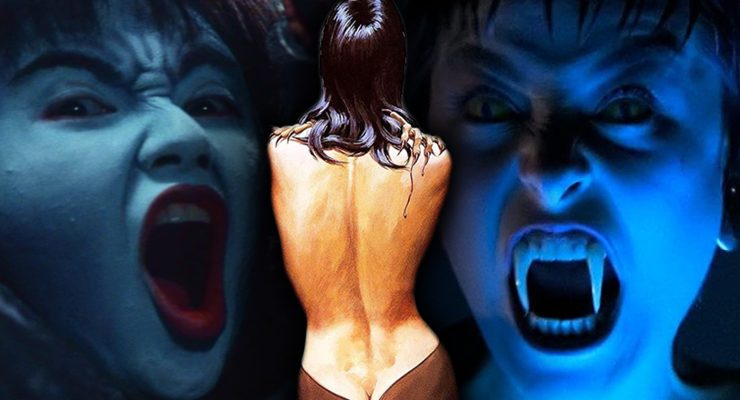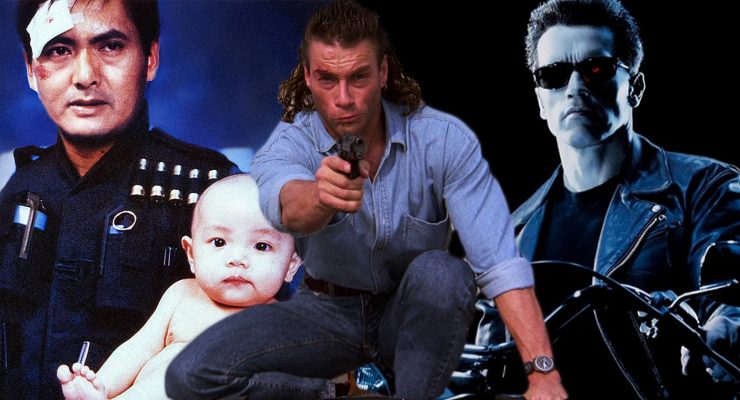With Tron Legacy set for release this month, Trevor Hogg explores the evolution of Disney’s cult sci-fi franchise…
“The first one had a lukewarm response critically and box-office wise because it was a great year,” recalled actor Bruce Boxleitner (Snakehead Terror) who played the title character in the original Tron (1982). “You had The Thing, Poltergeist, E.T., and Blade Runner. You had some classic movies. There are three movies in that group that have some of the best science fiction in film. So we came out in that block and I don’t know who said it, but he said it was the kids who saw Tron. They got it as opposed to the adults.” Recognizing the fact that the adolescent fans over the past twenty-eight years have become adults, Boxleitner added, “Technology has now become intergenerational.” One of those childhood admirers was given the responsibility of helming the long rumoured sequel by studio executives at Disney. “Tron was one of those movies I remember as a kid, seeing the first time on VHS in the mid-1980s,” stated filmmaker Joe Kosinski who makes his feature length debut with the project titled Tron: Legacy (2010). “It just looked like nothing else I had ever seen. Technically, it pushed boundaries. Conceptually, I think it was really decades ahead of its time. So it was an honour, but a daunting challenge, to do the next chapter of this film.”
“The generation that grew up with Tron has accepted it as the founding myth of the Internet,” observed Steven Lisberger who directed the first picture; in it Jeff Bridges (Crazy Heart) stars as a computer programmer who gets transported into a computer mainframe where he must survive a hostile video game grid with the help of a pair of renegade programs portrayed by Bruce Boxleitner and Cindy Morgan (Caddyshack). As a young animator, Lisberger was creatively inspired while attending a computer graphics screening; he co-wrote the Tron script with the intention of making a film situated entirely in a computer environment. The script responsibilities for the follow-up effort fell to a pair of writers who worked together on the NBC television series Lost, Edward Kitsis and Adam Horowitz. “One of the cool things I think that Joe, Eddie, and Adam did very well was to make it not only a sequel,” stated Jeff Bridges who reprises his signature role of Kevin Flynn, “it will work for people who saw the old Tron – but it also stands on its own.”
Better known for producing critically acclaimed television commercials for video games such as Halo 3 and Gears of War, Joe Kosinski has surrounded himself with a group of movie industry veterans who have worked with his mentor David Fincher (The Social Network); they are Oscar-winning visual effects supervisor Eric Barba, cinematographer Claudio Miranda, and film editor James Haygood. “You can only make a movie that you want to see,” remarked Kosinski. “For me, it was taking what I loved about the first film, which were the design elements that Syd Mead and Moebius did, which I feel are timeless, and extrapolate it forward twenty-eight years.” Explaining the story plot for the $170 million production, the filmmaker said, “In our story, Kevin Flynn emerged from his first experience as the CEO of ENCOM and actually released the Tron video game based on his experiences in the first movie.” Flynn mysteriously vanishes with a family friend taking on the role of surrogate father to his son portrayed by Garrett Hedlund (Troy). “I’m mostly in the real world,” stated Bruce Boxleitner who is cagy about whether his computer avatar makes an appearance. “I’m the storyteller here. Alan is the conduit from the past.” Kosinski is quick to point out, “The focus was always to serve the story we are telling. To include Bruce Boxleitner is not at all a cameo or stunt casting.”
Joe Kosinski slyly incorporates references to the movie’s cinematic predecessor. “Sam Flynn, in searching for his father, has to retrace his steps; he comes across clues and places we visited in the first film, like Flynn’s Arcade,” said the director. “Even in the world of Tron itself, a lot of vehicles and sequences have evolved. We get to see how the disc game and light cycle battle have changed.” Like his father before him, Sam finds himself transported into a computer world where he encounters one of the original cast members. “The thing I am most excited about is Jeff Bridges,” enthused Joe Kosinski. “He plays Kevin Flynn, the programmer from the first film, and he also plays Flynn’s avatar Clu in our film. Clu has remained the same age he was when he was created. So we will see Jeff at thirty-five years old playing against himself. He just does an incredible job.” The Academy Award winning actor found the experience to be a bit strange. “It was pretty wild, psychedelic,” admitted Bridges. “One of the things that always bothered me…when I had to be in a movie where you had to play yourself at different ages was that there was usually another actor that had to play the part as the young man. Now, that’s no longer the case.”
A major innovation was in the evolution of the trademark glowing outfits wore by the cast which stars Olivia Wilde (The Next Three Days), Michael Sheen (The Damned United), Beau Garrett (Ivory), James Frain (The Front Line), Yaya DaCosta (The Kids Are All Right), Elizabeth Mathis (Unstoppable) and Amy Esterle (Hot Tub Time Machine). “In the first film they had to basically trace each frame by hand. In this film, we did fully [functional] illuminated suits,’ remarked Joe Kosinski; when asked about the shooting process for the picture, he replied “It’s a combination of technologies that [Robert] Zemeckis has been using in terms of the completely digital motion-capture of a character and for the live action camera system. We used a camera developed by James Cameron’s company. We used a newer generation of camera than the one used on Avatar. They built it specifically for us.” After the initial principle photography more footage was filmed. “We added about five or six minutes to the movie,” said the director, “most of it in the first twenty minutes. Most of the shooting was done to set up Sam better and to give him more context.” The director appreciated the benefit of time. “I think we were really strategic and smart in how we did it. It was nice to be able to have a whole cut of the movie to analyze. That was one of the benefits of having eighteen months of post [production] on this movie.”
To link the stories between the original and the sequel, a video game has been created; “Tron: Evolution is basically the bridge between the original Tron movie from 1982 and the upcoming movie Tron: Legacy,” explained Darren Hedges who directed the project. “We truly are a prequel in every sense of the word… We started early with the filmmakers and sat down with them as they were beginning to shoot in Vancouver and looked at their story and said, ‘Look, guys, if you’re okay with this, we really don’t want to tell the same story that you’re telling.’…We sat down and came up with a full chronology and a mythology for Tron that spans from – actually prior to the 1982 movie, to just after the 2010 Legacy movie. Within that [time frame] there is a series of really seismic events that shape the universe.” As in the movie, a key figure in the video game storyline is the computer programmer played by Jeff Bridges. “He wants to basically create something new after the MCP has disappeared, so he starts envisioning this new universe. He creates this utopian setting. In that, there are a couple areas where a few miracles occur within the system, and essentially we tell the story of how this utopian era and the utopian vision of Kevin Flynn become the really dystopian police state that you see in the movie.” Hedges added, “I can’t reveal exactly what this series of seismic events is, but a virus called the Abraxas comes into the world.”
In comparing the tone of Tron: Legacy with the original Tron, Steven Lisberger observed, “Now there’s a sense that technology may have a dark side where it keeps us from connecting with each other. I think this film examines that problem.” Bruce Boxleitner agrees with Lisberger. “It reflects the world that we’re living in now,” stated Boxlietner. “It’s violent, darker; it’s possibly more cynical.” Joe Kosinski feels conflicted about the major publicity campaign surrounding the film. “I really want people to walk in seeing as little as possible because I want them to experience it in the movie. At the same time, I realize that you have to get the word out.” Questioned about the possibility of there being future sequels, Joe Kosinski answered, “I think the world we’ve built here is big enough and has scale [sufficient] to support another story. As to whether it will happen, that depends on how the film is received when it comes out.”
Visit the official Tron Legacy website here, and for more on the development of the original movie be sure to read Trevor’s Tron retrospective at the CGSociety.
Read our review of Tron: Legacy here.
Trevor Hogg is a freelance video editor and writer who currently resides in Canada.











